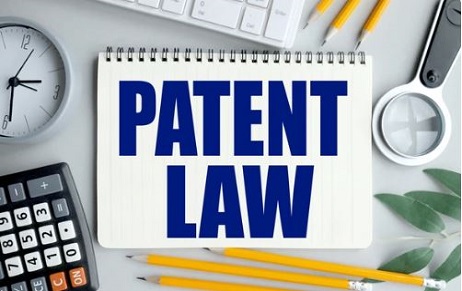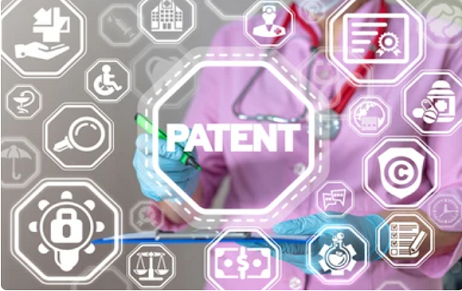Xilinx is a leading technology company focused on innovation and creating and monetizing its Intellectual…
The Effect of the New Patent Amendment on Pharmaceutical Companies
INTRODUCTION
Whether the Indian pharmaceutical firms are indeed innovating in developing new drugs or just incrementally improving the existing drugs to gain patents and arrive on the drug market. Indian Pharmaceutical Industry: regained focus on research and development, having turned out as the fourth largest in the world in volume terms (8% of global production) and the 13th in value terms (1.5% of global production) since 2005. Although the Amendment had limited the production of patented drugs, Indian as well as foreign pharmaceuticals have improvised techniques and ideas in various sectors. EFFECTS:
Investment in Research and Development
In 1970, foreign firms commanded more than two-thirds of the Indian market share, but by 2003 this share had shrunk to less than 23%, ruling out the effect of the new patent regime. Under the new regime, the Indian pharmaceutical industry is entering the world stage of research and development.
Before the Amendment, domestic companies spent much lesser in terms of research and development compared to MNCs.
For instance, in 2005 Ranbaxy and Dr. Reddy’s Laboratories spent just 7 and 10 percent of their total sales on R&D, much lower than the 15 percent average R&D spend by the top 15 pharmaceutical companies of the world. Despite the number of large Indian pharmaceutical companies that have boosted their R&D expenditure, Indian firms’ average overall R&D expenditure remains astoundingly smaller compared to its international peers with a total average of about 4 percent turnover in India than Germany’s 9 percent. The immediate general impression given by post-Amendment records concerning the scene would be that there has been scant progress in the research and development sectors. The significant growth in R&D expenditure primarily takes place through large pharmaceutical players; small and medium organizations, however faced problems since they were still dependent on reverse engineering till 2005.

The Amendment force Indian companies to survive through new and innovative research, thereby eradicating the unchallenged dependence on the reverse-engineering process in its entirety. In this context, it points out the fact that this is a change that transforms the regulatory business and accelerates the industry toward increased research and more competitiveness on the Indian pharmaceutical map. 2. Mergers and Alliances Major Indian corporations are making their global expansion journey through mergers and acquisitions, and Ranbaxy is one such example, which operated in more than 125 countries prior to being taken over by Daichii Sankyo back in 2008.
MERGERS AND ALLIANCES
One of the main driving forces for the acquisition trend in the Indian pharmaceutical sector is the shift that the Amendment is causing for patent protection, away from the process of manufacture and to the product itself. In the older paradigm for patenting. Local manufacturers would be able to reverse-engineer a product exactly and sell it cheaper at home. Reverse engineering practice is barred under the Amendment, which accounts for the spate of mergers and acquisitions.
The very meaning of the Amendment lies in the shift in motion from a process-based to product-based patent protection. This move has shocked the whole previous dynamics that could have otherwise facilitated reverse engineering by local manufacturers in order to reproduce a product that is patented. The resultant scene post-Amendment has thus borne increased activity internationally as Indian pharmaceutical firms seek strategic collaborations and alliances to evolve the changing regulatory and related strategic competitive advantages.
This is one such example-Ranbaxy being taken over by Daichii Sankyo: the international pharmaceutical companies come to realize value in collaboration with the established Indian counterparts.
Gaining additional access share through strategic collaboration in addition, international pharmaceutical companies can use well-established Indian firms’ distribution networks and research and development capabilities.
Thus, The Amendment, focusing attention on product-centric patentability, has thus catalyzed the global business expansion for Indian pharmaceutical companies and also trended a spate of cross-border mergers and acquisitions within the said industry. 3. Licensing The Amendment has thus significantly curtailed the avenues for the companies to leverage reverse engineering as a means to enhance sales thereby changing the contours for both generics and the exports of the bulk drugs.
LICENSING
These traditional strategies are not that sustainable anymore. Thus Indian companies have to negotiate through those deep-rooted challenges by forming symbiotic relationships with their overseas counterparts.
Indian and overseas companies are now entering into research and development through licensing agreements. Since it is very challenging for the Indian company to launch completely new molecules, the molecule development is totally dependent on the licensing agreement with the multinational companies. Recent joint ventures, for instance, the Nicholas Piramal deals with BioSymtech Inc. and Morvus Technology amongst others, are examples of this strategic change. These collaborative research deals are related to the development of drugs for chronic heel pain and potential areas in cancer, diabetes, and arthritis. Such collaborations underscore the research potential of the Indian companies coupled synergistically with the infrastructural support offered by their foreign counterparts. This is a very important distinction in terms of pharmaceuticals alone-between in-licensing and out-licensing. In-licensing is where research and development for a foreign entity is conducted by a local company. Out-licensing is where molecules in development are licensed to foreign MNCs; in that case, Indian pharmaceutical companies can utilise foreign MNC expertise and resources for undertaking their research and development work. The in-licensing system is dynamic, as it is well depicted in joint ventures where Indian companies take on research and development work for their foreign partners.
It acts as a bridging effort for the access of advanced capabilities of research and technology and sets up a symbiotic relationship wherein both parties enjoy the advantage of each other’s strength.
The collaborations recently agreed by Nicholas Piramal represent opportunities for in-licensing to be successful. An example is chronic heel pain and other common health issues, such as cancer, diabetes, and arthritis.
CONCLUSION
In fact, the out-licensing position places Indian pharmaceutical entities as contributors to global innovation. Licensing molecules under development by Indian companies to foreign MNCs creates a resource for further research and development and establishes strategic alliances with the global player. It permits Indian companies to introduce innovative molecules to the global market while leveraging the foreign partner’s expertise and capabilities for further research and development. In summary, post-Amendment changes have ushered in a sea change in Indian pharmaceutical approaches. Because of tight regulations over traditional practice, there has been an explosion of collaborative practices by way of licensing agreements, both in-licensing and out-licensing. These strategic alliances reveal the malleability of the Indian pharmaceutical industry in the use of foreign expertise in building its research and development capabilities and meaningful contributions to the global pharmaceutical innovation landscape.
Author: Sufian Ahmed, in case of any queries please contact/write back to us via email to chhavi@khuranaandkhurana.com or at IIPRD.
REFERENCES
- Pavan Mhetre, Indian Pharmaceutical Industry and Intellectual Property Laws, COM, (Nov. 14, 2023, 8:43 PM), https://www.scribd.com/document/37397735/Indian-Pharmaceutical-Industry-and-Intellectual-Property-Laws.
- SUDIP CHAUDHARI, Multinationals and Monopolies: Pharmaceutical Industry in India after TRIPS, 47, Eco & Pol. Weekly, 46, 49, (2012), https://www.jstor.org/stable/23214501.
- [1]Katherine Connor Linton and Nicholas Corrado, A Calibrated Approach: Pharmaceutical FDI and the Evolution of Indian Patent Law, Vol. 1, J. OF INTERN.COMMERCE AND ECONOMICs, 163, 171, (2006), https://www.usitc.gov/publications/332/journals/entire_journal_2008.pdf.
- Uwe Perlitz, India’s Pharmaceutical Industry on course for Globalisation, DEUSTCHE BANK RESEARCH, (Nov. 15, 2023), https://www.usitc.gov/publications/332/journals/eUwe%20Perlitz,%20India%E2%80%99s%20Pharmaceutical%20Industry%20on%20course%20for%20Globalisation,%20DEUSTCHE%20BANK%20RESEARCH,%20April%209,%202008,%20p.%207.ntire_journal_2008.pdf.
- Rajesh Garg, Gautam Kumra, Asutosh Padhi and Anupam Puri, Four Opportunities in India’s Pharmaceutical Market, THE MCKINSEY QUARTERLY, No. 4, INDIAN J. INTELL. PROP. L., 103, 110, (2015), http://www.commonlii.org/in/journals/INJlIPLaw/2011/7.pdf.
- D. Janodia, S. Pandey, J. Venkara Rao, D. Sreedhar, V. S. Ligade & N. Udupa, Patents Regime in India: Issues, challenges and opportunities in Pharmaceutical Sector, Vol. 7, THE INTERNET JOURNAL OF THIRD WORLD MEDICINE, (2008), https://print.ispub.com/api/0/ispub-article/10192.
- ERNST AND YOUNG’S Report to India Brand Equity Foundation (IBEF), PHARMACEUTICALS: MARKETS AND OPPORTUNITIES, available at (Last accessed on June 15, 2012)
- Sasikanta Mishra, Interview with Nagesh M. Joshi, SME’s may explore out-licensing for expansion, Express Pharma, 1-15 September, 2007 Issue, available online at http:// www.expresspharmaonline.com/20070915/interphexindiaipaconventionspecial02.shtml (Last accessed on June 15, 2012).



